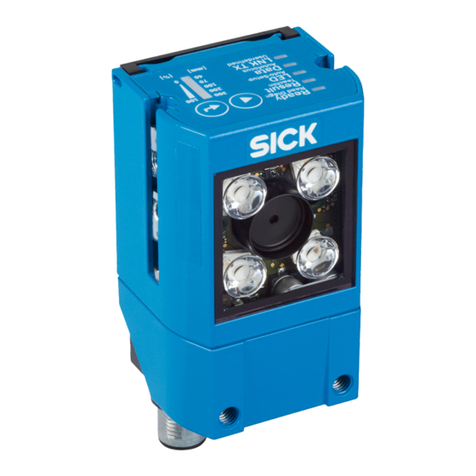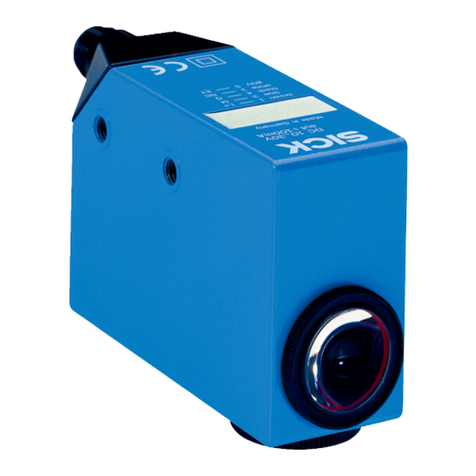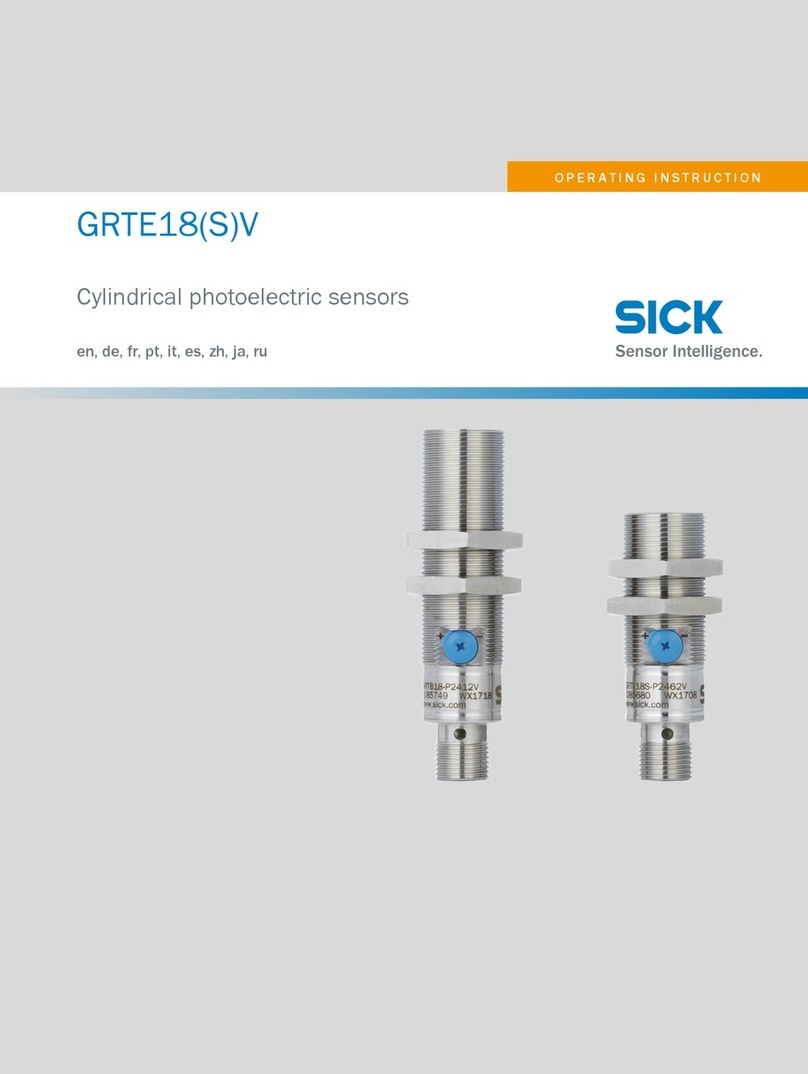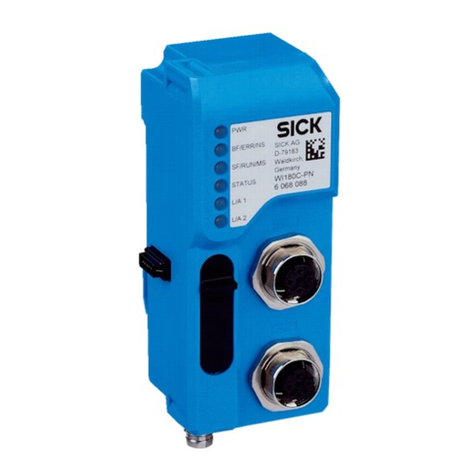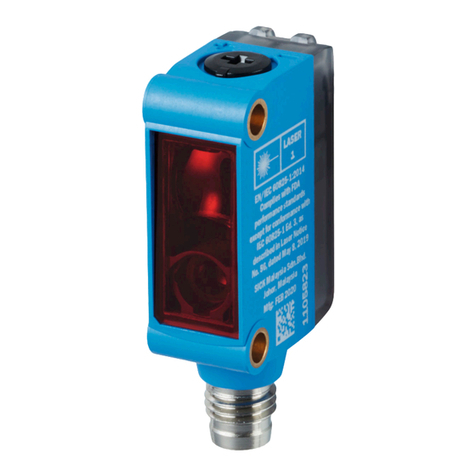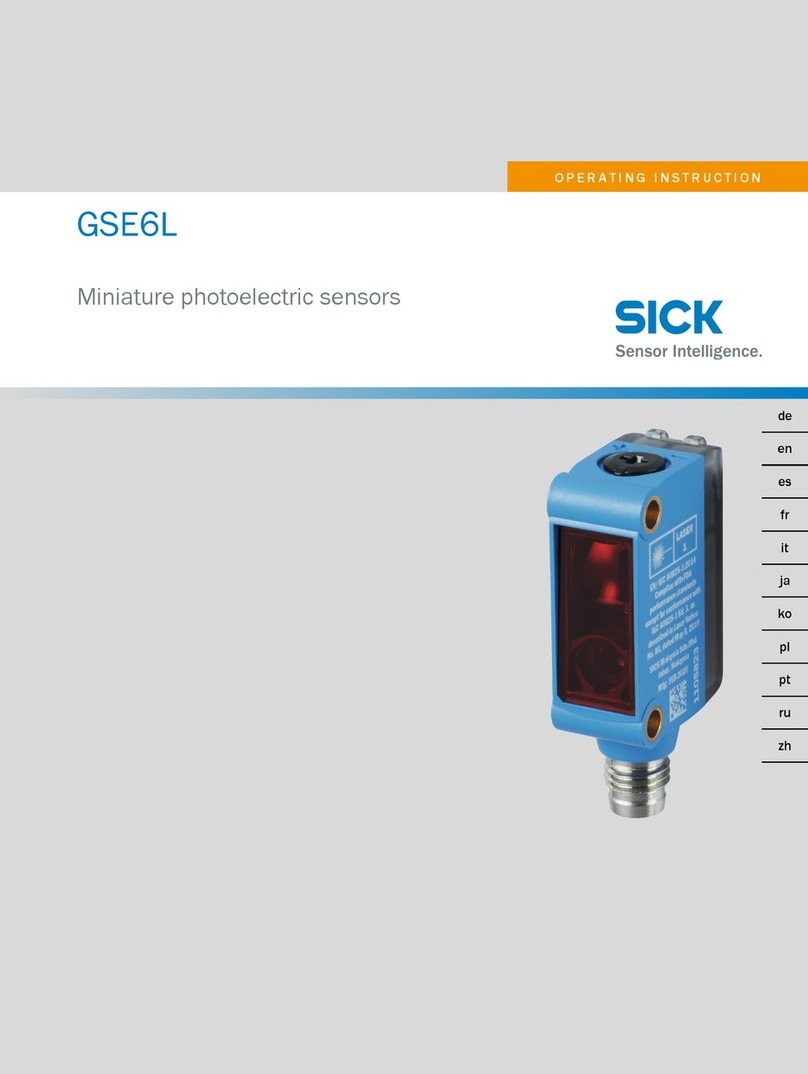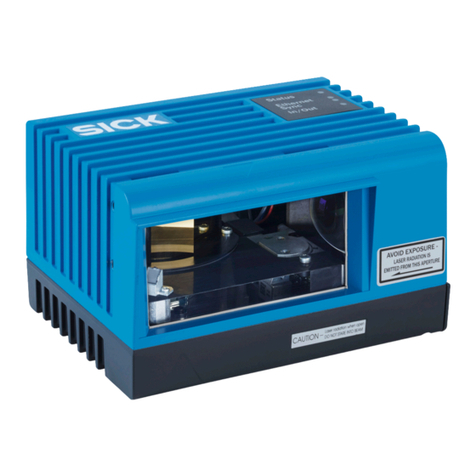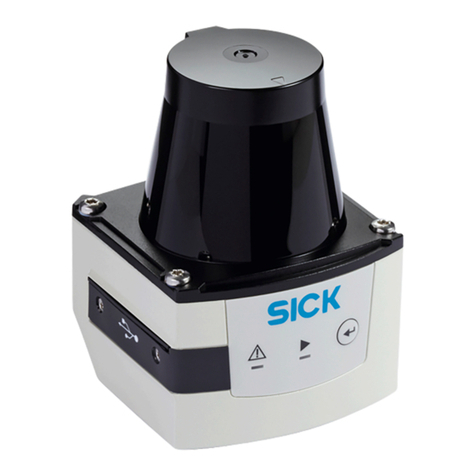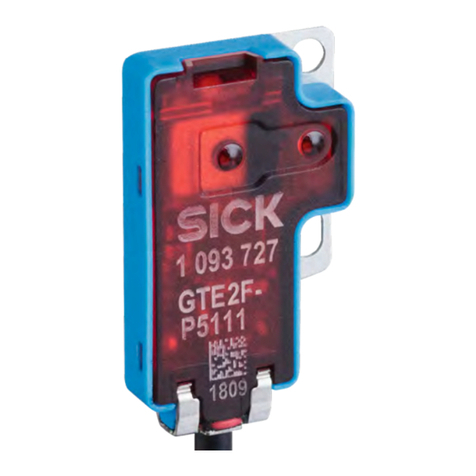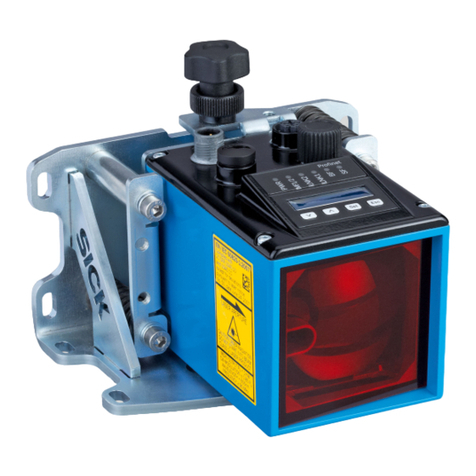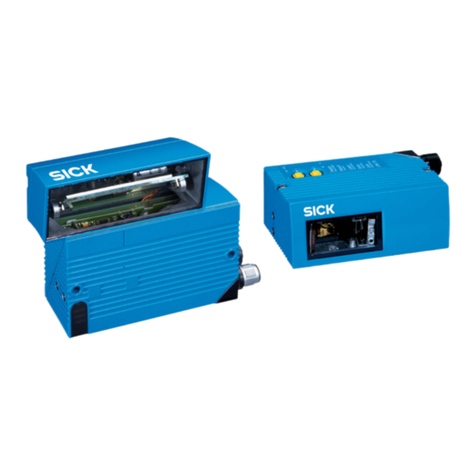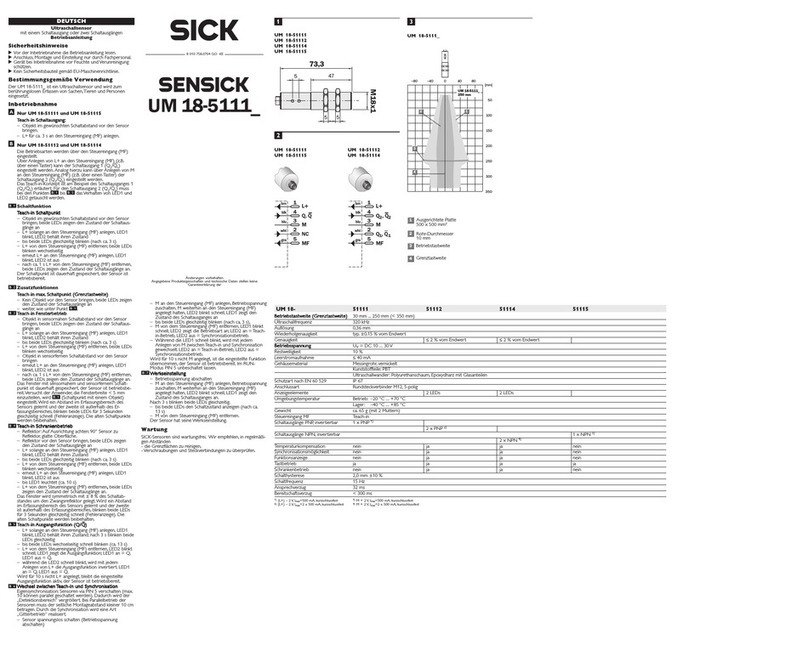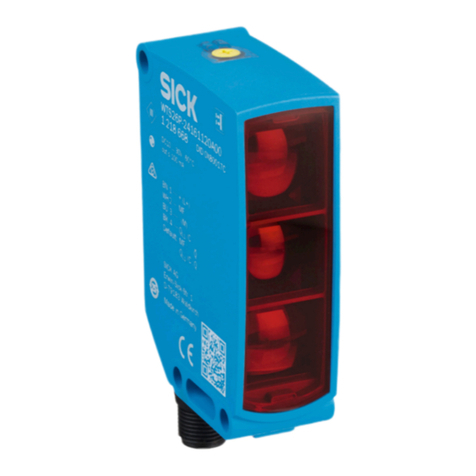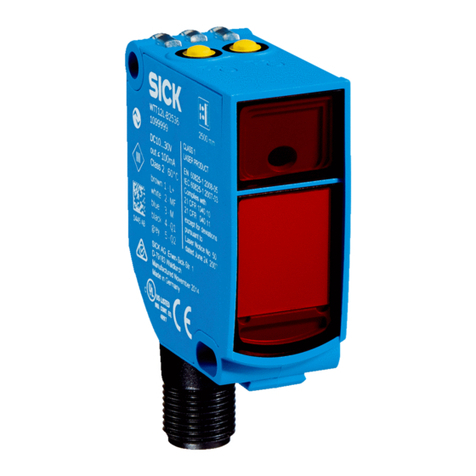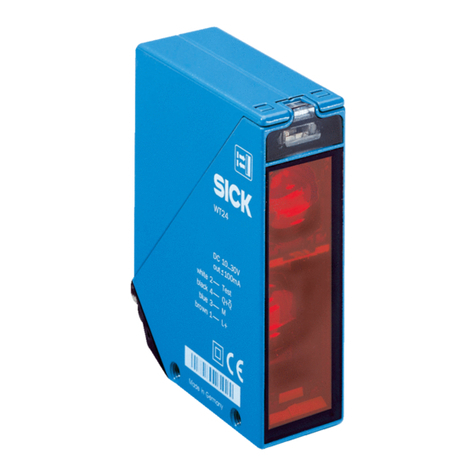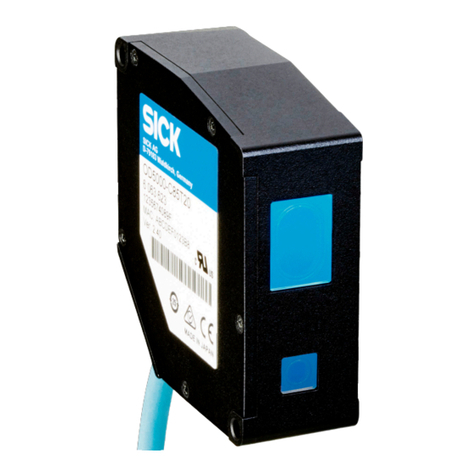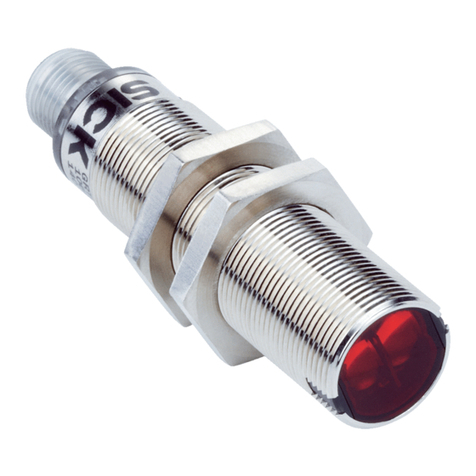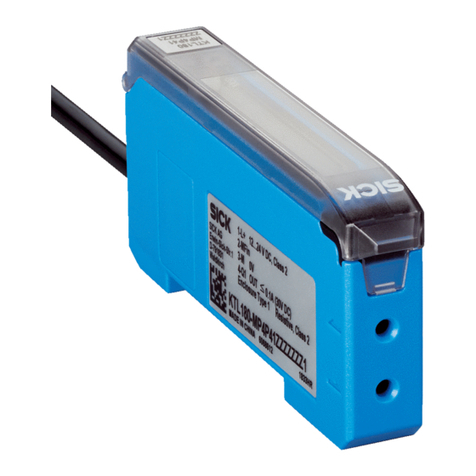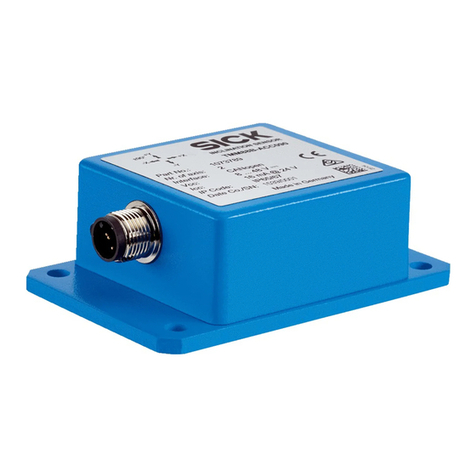
2 Safety information
2.1 Intended use
The TiM8xxP is a programmable 2D LiDAR sensor. It features one scan plane and is
suitable for applications which demand precise, non-contact optical contour measure‐
ment and environment perception.
The device is programmed on a PC by using the SICK AppSpace development environ‐
ment software and the SICK AppStudio software program.
Depending on the application, a browser-based, graphical user interface (HMI) can be
created, which provides opportunities defined by the application developer to influence
an application at operator level.
The device offers various interfaces and operating elements for controlling, program‐
ming, and operating purposes, which can be activated as necessary via development
environments, control systems (programmable logic controllers), or applications. How‐
ever, configuration, programming, and control requires various technical skills, depend‐
ing on how the device is connected and used.
The devices are primarily designed for use in industrial and logistics areas, and they
meet the requirements for industrial ruggedness, interfaces and data processing.
SICK AG assumes no liability for losses or damage arising from the use of the product,
either directly or indirectly. This applies in particular to use of the product that does not
conform to its intended purpose.
2.2 Improper use
Any use outside of the stated areas, in particular use outside of the technical specifica‐
tions and the requirements for intended use, will be deemed to be incorrect use.
•The device does not constitute a safety component in accordance with the respec‐
tive applicable safety standards for machines.
•The device must not be used in explosion-hazardous areas, in corrosive environ‐
ments or under extreme environmental conditions.
•Any use of accessories not specifically approved by SICK AG is at your own risk.
WARNING
Danger due to improper use!
Any improper use can result in dangerous situations.
Therefore, observe the following information:
■Product should be used only in accordance with its intended use.
■All information in these operating instructions must be strictly observed.
■Shut down the product immediately in case of damage.
2.3 Cybersecurity
To protect against cybersecurity threats, it is necessary to continuously monitor and
maintain a comprehensive and holistic cybersecurity concept. A suitable concept com‐
prises organizational, technical, procedural, electronic, and physical levels of defense
and provides suitable measures for different types of risks. SICK's products and solu‐
tions must be viewed as a component of this concept.
Information on Cybersecurity can be found at: www.sick.com/psirt .
2 SAFETY INFORMATION
6O P E R A T I N G I N S T R U C T I O N S | TiM8xxP 8024355/1DRC/2021-12-15 | SICK
Subject to change without notice
